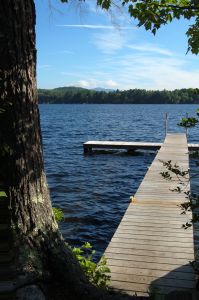By David Wolf, Attorney
Published by Child Injury Lawyer Network

What are the dangers or risks of injuries and drownings in lakes rivers and ponds? Summer time is filled with picnics, vacations, and swimming in most parts of the United States. On any typical weekend, including holiday weekends over the summer, children enjoy swimming, boating, and aquatic related activities. In most cases, a day filled with fun. Unfortunately, some children are the unfortunate victims of serious personal injuries and drowning incidents during outings to lakes, rivers, and ponds. There are many risks and dangers associated with swimming and aquatic related injuries.
Lack of Lifeguards.
In many areas, there is no assigned lifeguards or lifeguard stations for children swimming in rivers, lakes, ponds, and oceans. Simply stated, it is not feasible to station a lifeguard everywhere there is water and swimming and related activities. If there are no lifeguards in place for a particular swimming area, there should be some kind of plan for supervision in place for children who are swimming in lakes, rivers, ponds, canals, and oceans.
Uncertainty as to Depth of Water and Drop Offs.
Because rivers, lakes, and ponds are natural waterways, there often times is uncertainly as to the depth and steepness of certain areas of the waterways. In some areas, the depth of the water can be inches while in other areas the depth of the water can be 10 feet or higher. In addition to the uncertainties and dangers of the depths, there are other dangers associated with natural waterways in the form of visibility. It can also be difficult to see children who have gone underwater to swim or worse yet children who have fallen underwater because they have gotten tired or are in the process of drowning.
Size of the Swimming Area.
This is another factor that makes swimming in lakes rivers and ponds dangerous. Unlike the typical confined areas of a swimming pool, most lakes, ponds and rivers are quite large. Because of this, it is important for parents and other supervising adults to mark off in some way the limits or boundaries of the swimming area for the child during a particular outing.
Rocks and Other Sharp Objects.
This is yet another danger of swimming in lakes, rivers, and ponds. There can be sharp objects including rocks, trees, debris, and even trash on the bottom of lakes, rivers, and ponds that can cause laceration type injuries, contusion injuries and other injuries.
Because of the above dangers and others, there is an increased risk of drowning in natural waterways. Parents and other supervising adults to provide consistent and timely supervision and put safety precautions in place for every outing that involves swimming and / or is located near a natural waterway.
 Child Injury Lawyer Blog
Child Injury Lawyer Blog

